OCTOBER 14, 2022
2,560-Pound Pumpkin Sets New American Record At Half Moon Bay Competition

October is pumpkin season in America. For most people, this means eating delicious pumpkin-filled treats or visiting pumpkin patches to pick out the perfect fruit for Halloween. But for pumpkin farmers, it is a chance to showcase their giant produce at pumpkin weigh-offs. Though various such contests are held countrywide, the "Super Bowl" of pumpkin weigh-offs takes place in Half Moon Bay, CA.
The competition, which marked its 49th year on October 10, 2022, has always been popular with master pumpkin growers. However, it has become even more so since the top prize was increased to $30,000 in 2015. To claim the "World Record Prize," contestants must submit a "World Record Pumpkin." This year, that meant a gourd heavier than the massive 2,703-pound pumpkin that set a new world record in Italy in late September 2021. If the heaviest pumpkin weighs less, the owner receives $9 per pound.

This year's winner, a 2,560-pound gourd — nicknamed "Maverick" — was submitted by Travis Gienger from Anoka, MN. Though not a world record contender, it did outweigh the American record holder — a 2,554-pound squash — by six pounds!
The horticulture teacher from Anoka, MN, planted the fruit in April and spent almost six months carefully nurturing its growth. Gienger's daily care routine included fertilizing the soil, checking for roots, and watering the pumpkin. He covered the fruit in plastic during heavy rain and provided shade on hot days. Gienger's efforts were rewarded with a cash prize of $23,040 ($9 a pound)!

The competition's runner-up, Steve Daletas, took home $3,000 with his 2,425-pound entry, while third-place winner Ruben Frias received $2,500 for his 2,118-pound gourd. Other titles included the largest Coastside pumpkin, largest California pumpkin, and most beautiful pumpkin. The winners of each title won $1,000.
This is not Gienger's first time entering — and winning — the competition. In 2020, his 2,350-pound pumpkin also took first place. The 42-year-old then carved this pumpkin — nicknamed "Tiger King" — to earn the Guinness World Record for the largest jack-o-lantern by circumference. Gienger now plans to carve "Maverick" and break his own record.
Resources: miramarevents.com, USAtoday.com, Npr.com
OCTOBER 7, 2022
Columbus Day Or Indigenous Peoples' Day? The Debate Continues
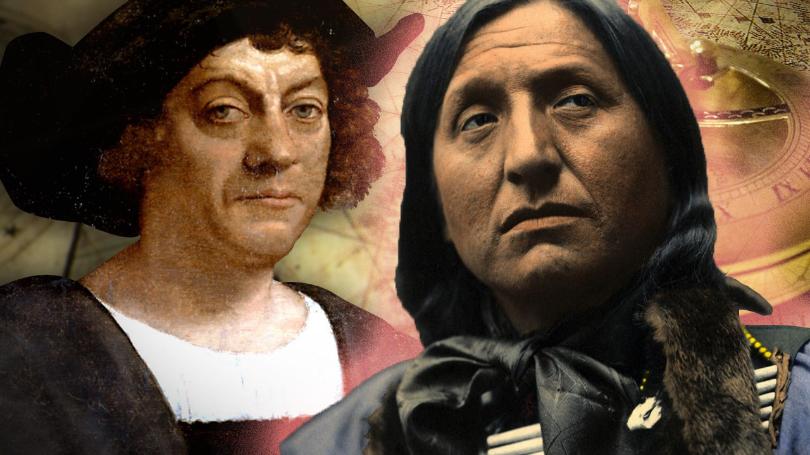
Columbus Day, which honors the Italian explorer's October 12, 1492, arrival to the Americas, has been a US federal holiday since 1971. However, the holiday, marked annually on the second Monday of October (October 10th this year), has always been controversial. Many believe that the European settlers' mistreatment of the Native American people is not a cause for celebration.
Historians also argue that Christopher Columbus did not "discover" the continent. The indigenous people had been living in the Americas long before his arrival. He was also not the first European to set foot in North America. A Norse explorer by the name of Leif Erikson set up the first European settlement in Greenland in AD 980 — nearly 500 years before Columbus's arrival.
Some US states, like Oregon, Iowa, and Nebraska, have never recognized Columbus Day. Hawaii renamed it "Discoverers' Day" — in honor of the state's Polynesian founders — in 1971, while South Dakota changed it to "Native American Day" in 1990. As public awareness of the controversy increased, many US schools and universities stopped observing the holiday.

In 1977, a delegation of Native nations — at the International NGO Conference on Discrimination Against Indigenous Populations in the Americas — proposed renaming the holiday to "Indigenous Peoples' Day." They believed the change would help honor the victims of American colonization. The resolution passed with an overwhelming majority.
Berkeley, CA, was the first city to make the change in 1992. Santa Cruz, CA, followed shortly after in 1994. The idea really began to gain momentum after 2014. That year, Minneapolis, MN, Grand Rapids, MN, and Seattle, WA, renamed Columbus Day "Indigenous Peoples' Day." Since then, over 100 cities and entire states, including Alaska and Oregon, have adopted Indigenous Peoples' Day.

In 2020, Colorado replaced Columbus Day with Cabrini Day in honor of Frances Xavier Cabrini. The Italian-American Roman Catholic nun helped establish over 67 schools, hospitals, and orphanages, in the United States and South and Central America. In 2021, President Joe Biden became the first sitting US president to issue a presidential proclamation marking Indigenous Peoples' Day. It encouraged Americans to celebrate the holiday on the second Monday in October, along with Columbus Day.
But not everyone thinks a name change is necessary. For Italian Americans, Columbus Day is the centerpiece of Italian Heritage Month, celebrated every October. They argue that the holiday honors the history of immigration, not the explorer. Therefore, they believe the name should be retained or changed to something more appropriate, like Italian Heritage Day.
Resources: History.com, Wikipedia.org, CNN.com, Interchange.com
OCTOBER 11, 2022
Fossils Of Terrifying Monster Sea Lizard Found in Morocco
WORD COUNT
READING LEVEL
LISTEN TO ARTICLE

Researchers from the University of Bath in the United Kingdom have uncovered the fossil of a new mosasaur species that ruled the seas during the Cretaceous period. The ferocious marine lizard was an apex predator that thrived in the waters of Morocco at the same time T. rex was on land. The scientist named the creature Thalassotitan atrox (T. atrox) from the Greek words "Thalassa" and "titan," meaning "sea giant." The species name atrox translates to "cruel" or "merciless."
"Thalassotitan was an amazing, terrifying animal," said study leader Dr. Nick Longrich. "Imagine a Komodo dragon crossed with a great white shark crossed with a T. rex crossed with a killer whale."
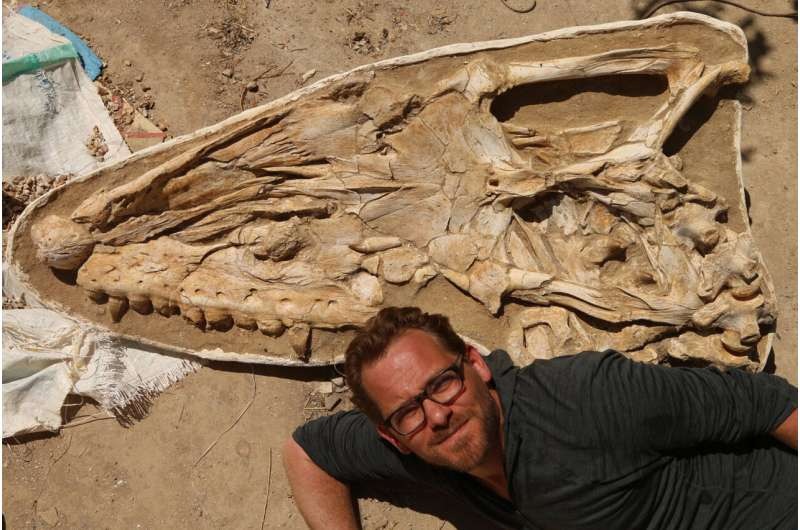
Mosasaurs comprised a diverse group of giant lizards that inhabited much of the Atlantic Ocean from 135 million to 66 million years ago. The scaly-skinned reptiles grew up to 40 feet in length and used their paddle-like flippers and tail fin to glide through the water. Mosasaurs went extinct at the same time as the dinosaurs after a giant asteroid struck Earth 66 million years ago. Fortunately, their modern-day relatives — snakes, iguanas, and monitor lizards — did not evolve to be as large.
The remains of the T. atrox were unearthed in an area of Morocco that was underwater during the late Cretaceous period. The carnivorous reptile had an enormous 5-foot-long skull and measured almost 30 feet long. Unlike other mosasaur species, which had long snouts and thin teeth suitable for eating small fish, the T. atrox sported a stout muzzle and gigantic, orca-like teeth. This allowed the lizard to easily devour giant marine reptiles, like sea turtles, plesiosaurs, and even other mosasaurs. The researchers suspect the creature's chipped and broken teeth may have been damaged as it violently attacked its prey and chewed on their bones.
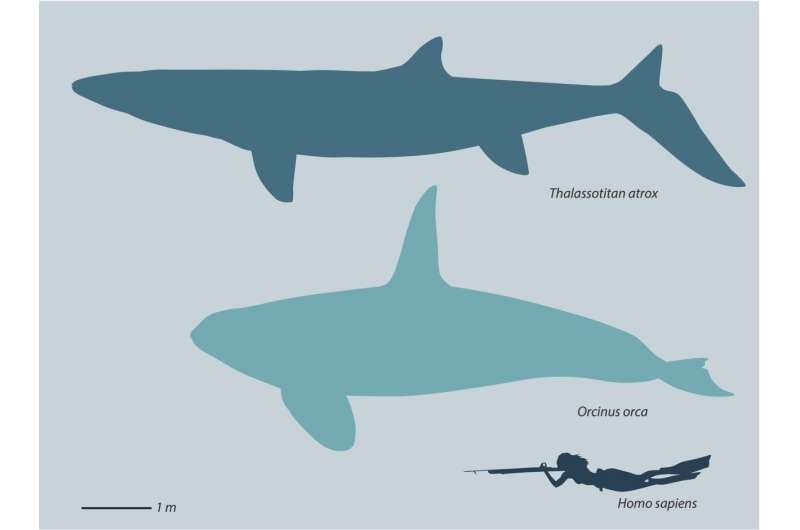
This is not the first time a mosasaur fossil has been found in Morocco, and it likely will not be the last. The scientists, who published their findings in the journal Cretaceous Research on August 24, 2022, believe the North African country was once home to about 30 different mosasaur species.
While T. atrox is one of the largest mosasaur species, it is not the biggest. Mosasaurus hoffmanni, a different mosasaur species found in Russia in 2014, was estimated to be about 56 feet long.
Resources: Livescience.com, Phys.org, CNN.com
OCTOBER 6, 2022
Meet Fenrir, The World's Tallest Living Domestic Cat
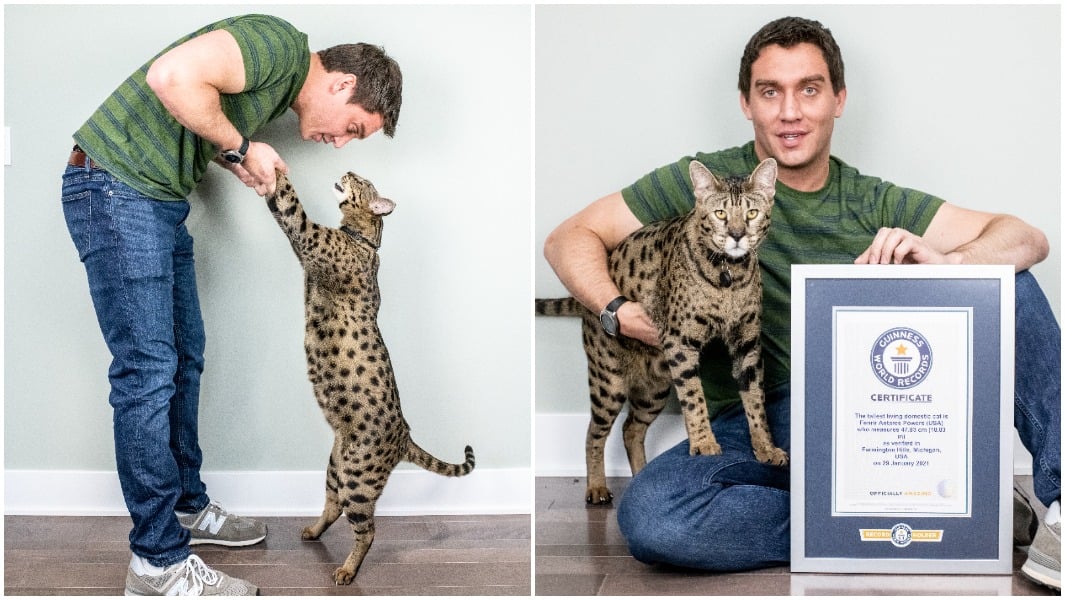
A gentle giant in Farmington Hills, Michigan, has set a Guinness World Record as the world's tallest living domestic cat. Fenrir Powers measured an impressive 18.83 inches on January 29, 2021. The two-year-old Savannah cat's achievement was revealed in the Guinness World Records 2023 edition, released on September 13, 2022.
Savannah cats are a cross between domestic cats and large-eared wild African cats. Measuring between 14 and 17 inches tall, they are the tallest and one of the largest cat breeds. But, Fenrir, who stands a full inch taller, is exceptionally tall even for his breed. "He just grew and grew like Clifford the Big Red Dog," Fenrir's owner, Dr. Will Powers, said in a video about the cat.

Dr. Powers adopted Fenrir when he was just 12 weeks old. The proud owner says the intelligent cat uses his height to his advantage. "When we were trying to take some pictures of him, we had to shut some of the other cats out of the room, and Fenrir decided he didn't want to be in the room anymore," he recalled. "So he stood on his hind legs and opened the door."
When not breaking records, Fenrir spends his time helping anxious patients at the clinic. Powers said, "He wanders around the office receiving pats from people, snoozing on exam room tables, and begging for treats."
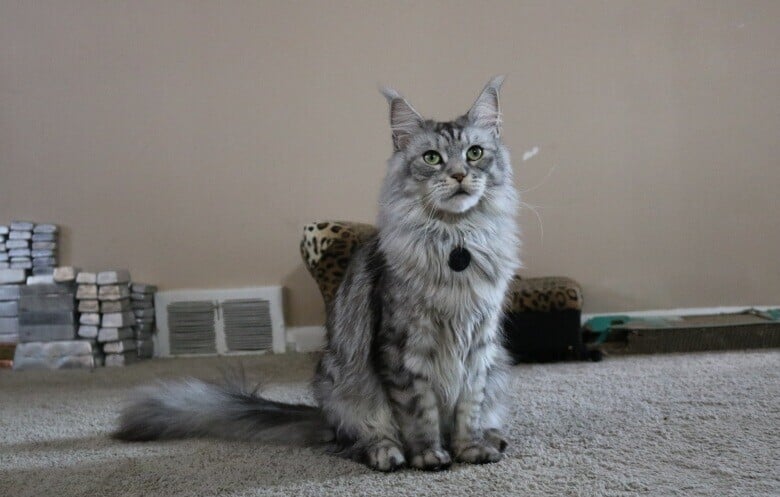
Fenrir is not the only celebrity in the Powers household. The physician's other famous cats include Altair Powers and Cygnus Powers — the current and previous Guinness World Record holders for the longest tail on a living domestic cat. Fenrir's late brother Arcturus Powers, who holds the Guinness World Record for the tallest domestic cat ever, was also a family pet. Unfortunately, Cygnus and Arcturus died in a house fire in 2017.
Resources: Guinnessworldrecords.com, USAtoday.com, Cbsnews.com
OCTOBER 13, 2022
Robotic Sleeves Could Help Children With Cerebral Palsy

Cerebral palsy (CP) is the most common motor disability in children. The condition, which affects about 1 in 345 children, can make daily activities like walking, eating, or even lifting a cup difficult. A team of researchers from the University of California, Riverside (UCR) hopes to alleviate the daily struggles with robotic clothing that will allow kids with cerebral palsy to better control their arm movements.
Wearable robotic units, like exoskeletons, to help people with mobility issues have been around for many years. However, they are rigid and uncomfortable to wear. The UCR team plans to use lightweight materials to create a robotic sleeve that is cheap, durable, and, most importantly, comfortable to wear on a daily basis.
"Hard materials don't interact well with humans," said Jonathan Realmuto, UCR assistant professor of mechanical engineering and project lead. "What we're going for by using materials like nylon and elastic are essentially robotic garments."

The scientists envision the robotic sleeves to have sealed areas that can be inflated. When filled with air, they would become temporarily rigid and provide the force needed for movement. The clothing will be fitted with sensors to detect small muscle contractions and anticipate what the wearer wants to do. The inflated bladders will then help move the arm to complete the intended action.
"If we can help kids brush their own teeth, pour water or open doors, actions that others take for granted, it's a huge win for them," Realmuto stated in a press release. "But it's also a huge win for their families and caretakers."
The UCR engineers are not the only ones working on soft robotic clothing to help those with motor disabilities. San Francisco-based startup CIONIC is on a similar mission. The company's first product, the CIONIC Neural Sleeve, is designed to improve mobility for people with conditions like cerebral palsy, multiple sclerosis, and stroke. Jeremiah Robison, the founder of CIONIC, was inspired to develop the product after seeing his daughter struggle with cerebral palsy.
Resources: eandt.theiet.org, engadget.com.
OCTOBER 24, 2022
The Origins Of Some Beloved Halloween Traditions

Few countries celebrate Halloween as enthusiastically as the United States (US). Children and adults spend months — and millions of dollars — looking for the perfect costume. Many families decorate homes and front yards with spooky skeletons and jack-o-lanterns. How did all these fun customs begin? Read on.
Trick-Or-Treating

Halloween's most cherished tradition — trick-or-treating — is credited to the Roman All Souls' Day holiday. On this day, poor people would visit the wealthy and offer a prayer for their dead. They would receive a spiced treat called "soul cake" in return. The tradition changed in Ireland and Scotland when kids in costumes began getting treats for singing or performing a skit. Immigrants from the two countries brought the fun custom to the US in the early 19th century. The rest, as they say, is history!
Why Candy?
Most people hand out candy during Halloween. But in the mid-20th century, kids also received fruits, nuts, coins, and even small toys. In the 1950s, candy companies introduced small individually-wrapped chocolates during Halloween. While that helped increase sales, candy really took off in the 1970s after parents became fearful of their children accepting unwrapped treats.

Today, over 600 million pounds of candy are sold in the US on Halloween! That is an average of 24 pounds per American. In 2022, US consumers will spend about $3.1 billion on the treats! While each state has its favorites, the nationwide winner is Reese's Cups. Skittles and M&M's round up the top three.
Jack-O-Lanterns

No Halloween is complete without a spooky or friendly pumpkin jack-o-lantern. The fun custom can be credited to the Irish. They initially used turnips or beets for their ghoulish creations. However, after coming to America, the immigrants switched to pumpkins. The readily-available fall fruits were much easier to carve.
Black and Orange Decor

Black and orange are the colors of choice during Halloween. The custom can be traced back to the 2000-year-old Celtic festival Samhain. Observed every November 1st in what is now modern-day Ireland, it marked the end of the harvest season and the start of winter. Orange represented the autumn harvest season, while black illustrated the "death" of summer.
Happy Halloween!
Resources: history.com, candystore.com, wikipedia.org
OCTOBER 28, 2022
Sun Flashes A Goofy "Smile" For Halloween
The Sun is getting excited about Halloween as well! On October 26, 2022, NASA's Solar Dynamic Observatory (SDO) caught the fiery star sporting a cheerful "smile." However, don't be fooled by the friendly "jack-o'-lantern" look. It could trigger a mild solar storm on Earth on October 29, 2022.
The three dark patches that form the "eyes" and "mouth" are coronal holes. The open structures allow solar winds to escape into space at speeds of up to 1.8 million mph (2.9 million kph). They appear dark because they are cooler and less dense than the rest of the Sun's surface.
Earth will be on the receiving end of the strong solar wind streams this time. Our atmosphere blocks the fierce bursts of radiation. Hence, they cause no harm to humans or animals on the ground. But the energy from the solar winds could disrupt our satellite systems and power grids. Fortunately, the impact is expected to be minimal.
Also, any minor inconvenience will be well worth it. When the Sun's electrically-charged particles collide with the Earth's atmosphere, they will spark beautiful light shows called auroras. The phenomenon is usually observed closer to the North and South Poles. That's because the Earth's magnetic field attracts the particles toward them.
Happy Halloween!
Resources: NASA.gov, Space.com, Weather.com
OCTOBER 21, 2022
Citroën Unveils Concept Car Made of Cardboard And Other Sustainable Materials
Electric cars are a great way to reduce our carbon footprint. But French car maker Citroën believes more can be done to make vehicles sustainable. On September 29, 2022, the company unveiled Oli, a concept electric car that can be "reused or recycled throughout ownership."
The car's most notable difference is the use of cardboard for the roof, hood, and bed panels. The company asserts that the honeycomb-shaped cardboard, inserted between fiberglass panels, is stronger than steel. Oli's other "green" features include lightweight seats that use 80 percent less material than traditional car seats. Its windshield and windows are designed to repel the sun's rays. This reduces the need for air-conditioning. The doors, windows, bumper, and tires are made with recycled or natural materials. The car's top speed is restricted to 68 mph (109 kmh) to increase efficiency.

Oli weighs just under 1 ton (1,000 kg). This is about a third of the weight of an average compact car! Thanks to its lightweight setup, its 40 kWh battery can last up to 248 miles (399 km) between charges. It takes just 23 minutes to charge the battery from 20 percent to 80 percent.
Oli is just a concept vehicle and will likely never be made. But it is an important reminder that automakers can and must do more for the environment. "It's
Resources: Citroën.co.uk, Inverse.com, cnbc.com



沒有留言:
張貼留言